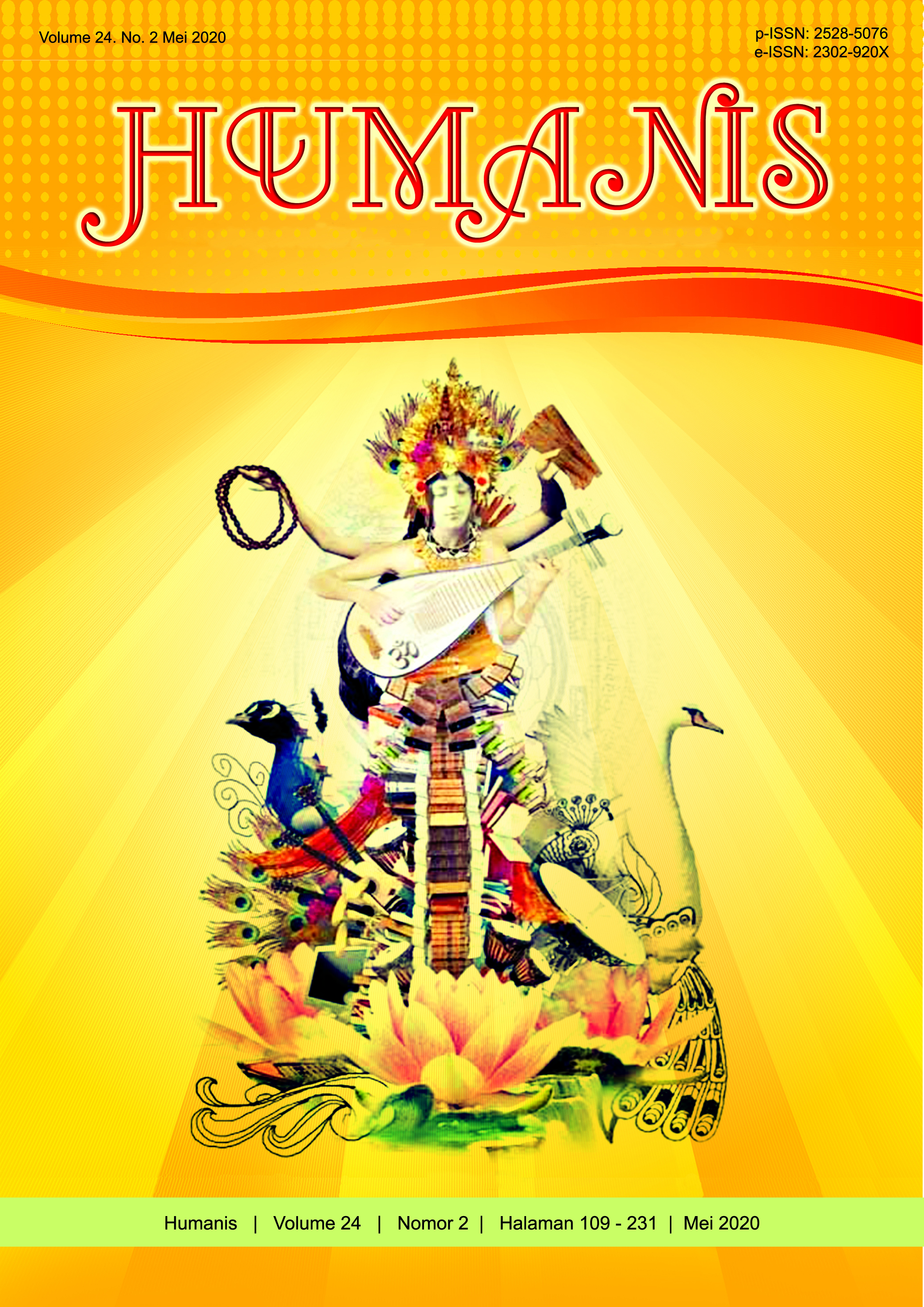Indonesian – English Code-Mixing in Novel Touché by Windhy Puspitadewi
Abstract
This studyaims to find out the types of code-mixing, to identify word classcategories of the words being mixed, and to explain the factors of using mixed languages in Touché novel.Data were taken from Touché novel by WindhyPuspitadewi and were collected by using documentation method. The sample data were selected by using purposive sampling method. This study used qualitative method to analyze the data and the results are presented in formal and informal method. In order to analyze the code-mixing, the theory of factors in using code-mixing proposed by Tej K. Bhatia and William C. Ritchie (2013) was used. The result showed that from 85 Indonesian – English code-mixing data that had been collected, it was found that 39 data are insertion code-mixing, 36 data are alternation code-mixing and 10 data are congruent lexicalization. The categories of words being mixed are varied such as words (i.e. nouns, adjectives, etc.), phrases (i.e. noun phrases, adverb phrases, etc.), and clauses (i.e. dependent and independent clauses). There are four factors found in using code-mixing in the novel: social roles and relationships of participants, situational factors, message-intrinsic factors, and language attitudes, dominance and security.
Downloads
References
Anonim. (2018). Word Classes and Phrase Classes. Available from https://dictionary.cambridge.org [Accessed on December 2018]
Ansar, Fithrah A. (2017). Code Switching and Code Mixing in Teaching-Learning Process. English Education: JurnalTadrisBahasaInggris Vol. 10 (1), 29-45.
Bhatia, T. K., & Ritchie, W. C. (2013). The Handbook of Bilingualism and Multilingualism 2nd edition. UK: Blackwell Publishing.
Girsang, Mei L. (2015). An Analysis of Code Switching and Code Mixing as Found in Television Advertisement. The Explora Journal of English Language Teaching (ELT) and Linguistics
Holmes, J. (2013). An Introduction to Sociolinguistics. London and New York: Routledge.
Kia, L. S., Cheng, X., Yee, T. K., & Ling, C. W. (2011). Code-Mixing of English in the Entertainment News of Chinese Newspapers in Malaysia. International Journal of English Linguistics Vol.1 No.1, 3-14.
Kothari, C. (2004). Research Methodology Methods and Techniques (Second Revised Edition). New Delhi: New Age International (P) Ltd., Publishers.
Mujiono, Wilujeng, R., & Suharto, M. (2017). Code Mixing as a Communication Strategy Performed by Outbound Call (OBC) Center Agents. International Journal of Social Sciences & Educational Studies Vol. 3 No. 3, 4-18.
Mulyajati, E. (2017). The Indonesian-English Code-Mixing in Just Alvin Show at Metro TV. Journal of English Language and Culture Vol. 7 No. 2, 57-63
Muysken, P. (2000). Bilingual Speech: A Typology of Code-Mixing. UK: Cambridge University Press.
Oxford. (2011). Learner's Pocket Dictionary. UK: Oxford University Press.
Sudaryanto. (1993). Metodedan Aneka TeknikAnalisisBahasa (PengantarPenelitianWahanaKebudayaanSecaraLinguistis). Yogyakarta: Duta Wacana University Press.
Torres, L. (2007). In the Contact Zone: Code-Switching Strategies by Latino/a Writers. MELUSVol. 32(1), 75-96. Retrieved from http://www.jstor.org/stable/30029707
Van Valin, J. R. (2001). An Introduction to Syntax. UK: Cambridge University Press.
Wardhaugh, R. (2006). An Introduction to Sociolinguistics 5th Edition. UK: Blackwell Publishing Ltd.


















